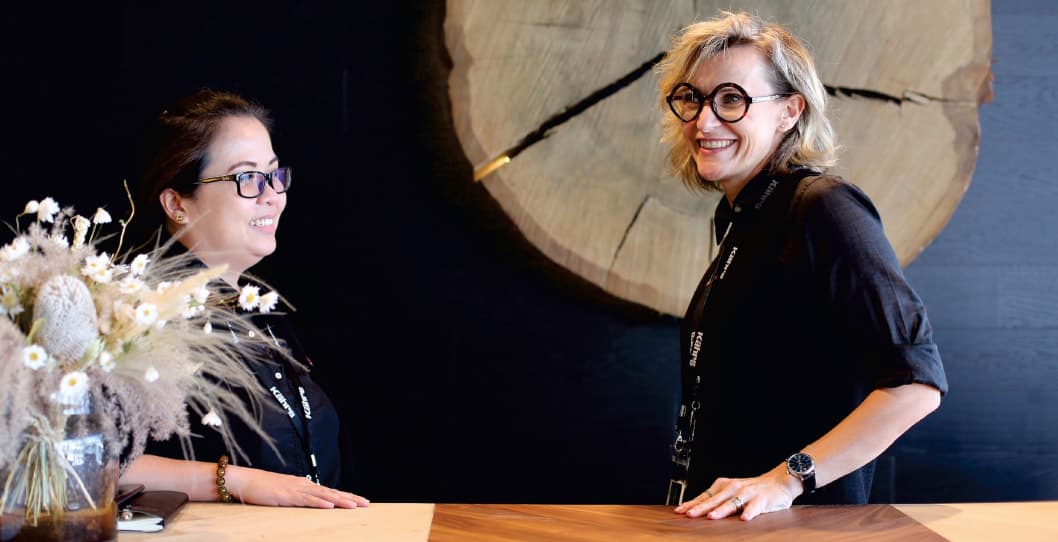Scandinavian Interior Design: Everything You Need to Know
July 11, 2025
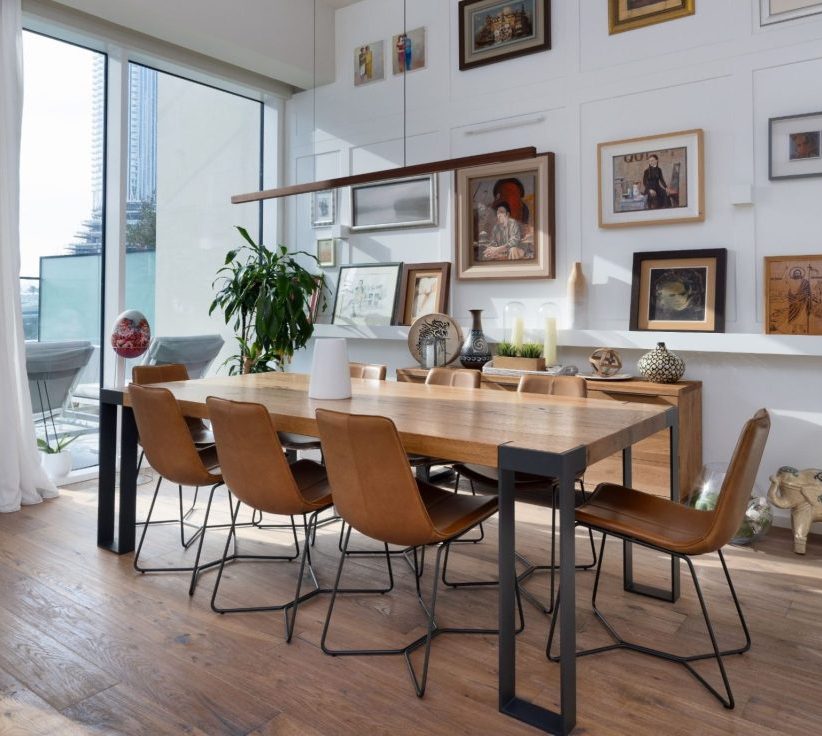
Scandinavian interior design has become a global trend, celebrated for its timeless simplicity and effortless elegance. Emerging from the Nordic lifestyle, its key elements prioritise minimalism, functionality, and a deep connection with nature.
One of the main reasons a majority of interior designers prefer Scandinavian-inspired decor is that its clean lines contribute to a calming atmosphere. Whether you’re redesigning your entire home or refreshing a single room, embracing Scandinavian interior design principles can help you create harmonious, inviting spaces that balance beauty and practicality.
What is Scandinavian Interior Design
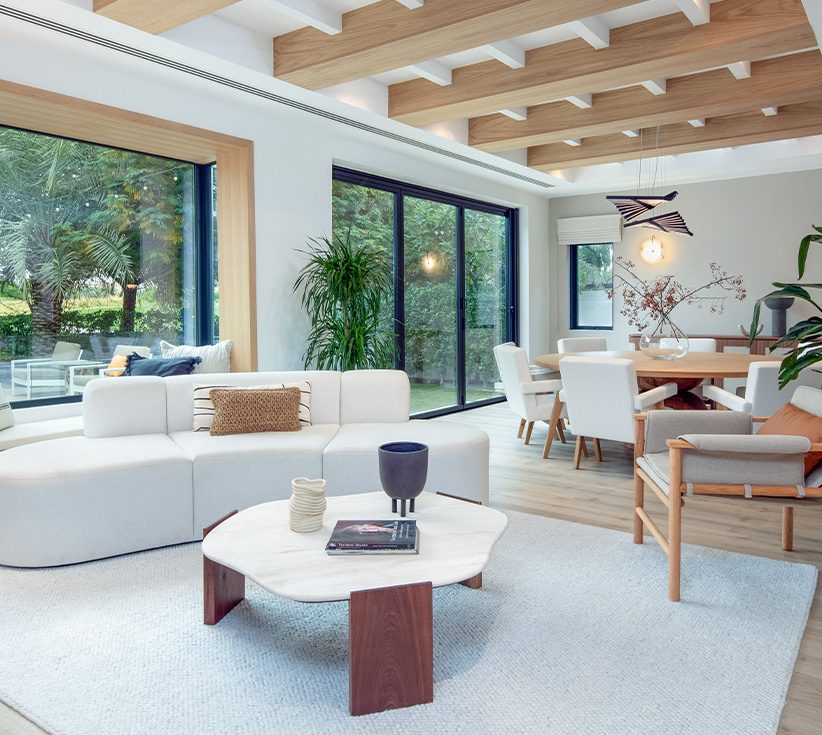
Scandinavian interior design is a timeless style that originated in the Nordic countries of Denmark, Sweden, Norway, and Finland during the early 20th century. It gained global recognition in the 1950s as a design movement that perfectly blended beauty and practicality. Deeply influenced by the region’s climate and lifestyle, Scandinavian interior design is characterised by bright, airy spaces to counter long, dark winters.
Scandinavian homes and interiors are lauded for uncluttered layouts and soothing neutral colour palettes, using organic materials like wood and stone to add warmth to the space. With its focus on maximising natural light, Scandinavian interior design works well with open floor plans and large windows to create inviting spaces that are equally functional and aesthetically pleasing. In many ways, these interiors reflect the key ideas behind contemporary Scandinavian architecture.
The 4 Scandinavian Interior Design Principles
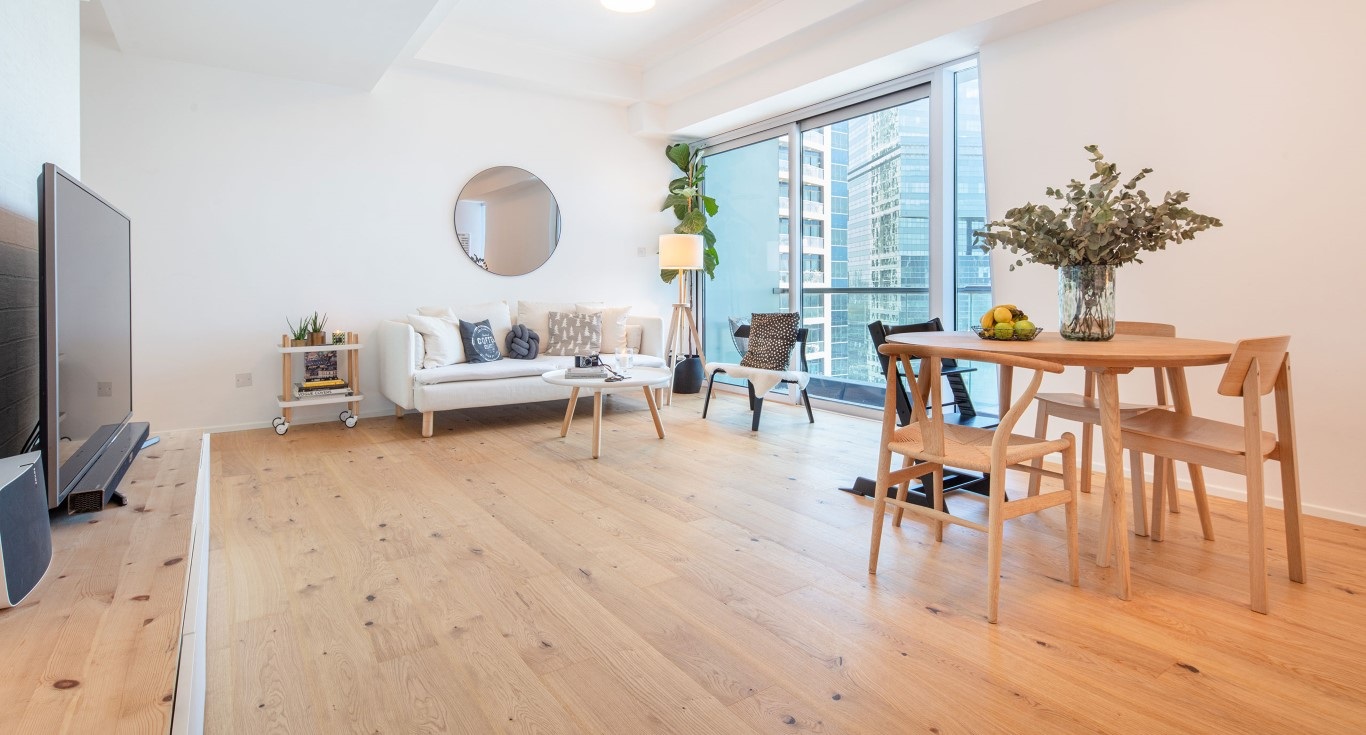
1. Neutral Tones
The foundation of Scandinavian interior design is its calming and balanced colour palette. Whites, soft greys, and earthy tones are widely used to create a light and airy feel. These neutral hues act as a blank canvas, allowing natural light to reflect throughout the space and enhancing its simplicity.
2. Natural and Industrial Materials
Combining industrial and Scandinavian interior design principles, this style celebrates nature by incorporating materials like wood, leather, wool, and stone. Light woods, such as pine, oak, or ash, are often used for flooring, furniture, and decor, giving a warm, organic feel. This mix is frequently seen in Scandi Nordic decor, blending rustic charm with modern functionality.
3. Functional Furniture
Scandinavian design style is about creating a cohesive aesthetic, requiring every piece of furniture to be thoughtfully chosen. Ergonomic designs also dominate, ensuring functionality without cluttering the space, which aligns with the values of contemporary Scandinavian architecture.
4. Hygge: The Philosophy of Cosiness
Scandinavian interior design embraces a concept known as “hygge” – the Danish word for cosiness. This is achieved with cosy accents such as soft throws, plush cushions, and warm lighting with candles or ambient lamps. These are key features of Scandi Nordic decor, which emphasise warmth and comfort.
Key Considerations of Scandinavian Design Style
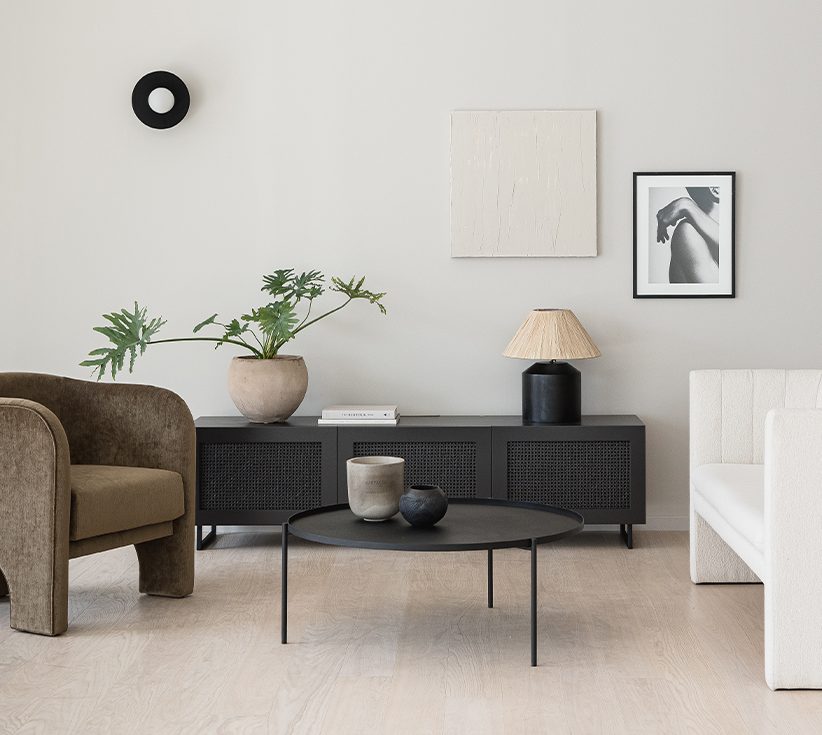
Adopting Scandinavian interior design principles ensures that your space embodies simplicity and practicality while maintaining an inviting atmosphere.
Minimalism with Purpose
Scandinavian design avoids unnecessary clutter. Each item in a room must have a function or add beauty to the space. Opt for sleek furniture that complements your flooring and avoid overdecorating.
Maximising Natural Light
Natural light is a central feature of Scandinavian design style. Large windows, sheer curtains, and strategically placed mirrors help brighten interiors, making spaces feel airy and expansive.
Natural Textures and Materials
Incorporate wood, linen, and wool for a warm and organic feel. Use natural finishes for flooring and furniture to maintain a raw, authentic look.
Functional Layouts
Scandinavian homes are designed for everyday living, prioritising open and practical layouts that enhance both function and flow. Opt for multi-purpose furniture that maximises space without compromising style. Incorporating floor cleaning tips and tricks into your routine ensures these spaces remain pristine and inviting.
Tips on How to Achieve Scandinavian Interior Design in Homes
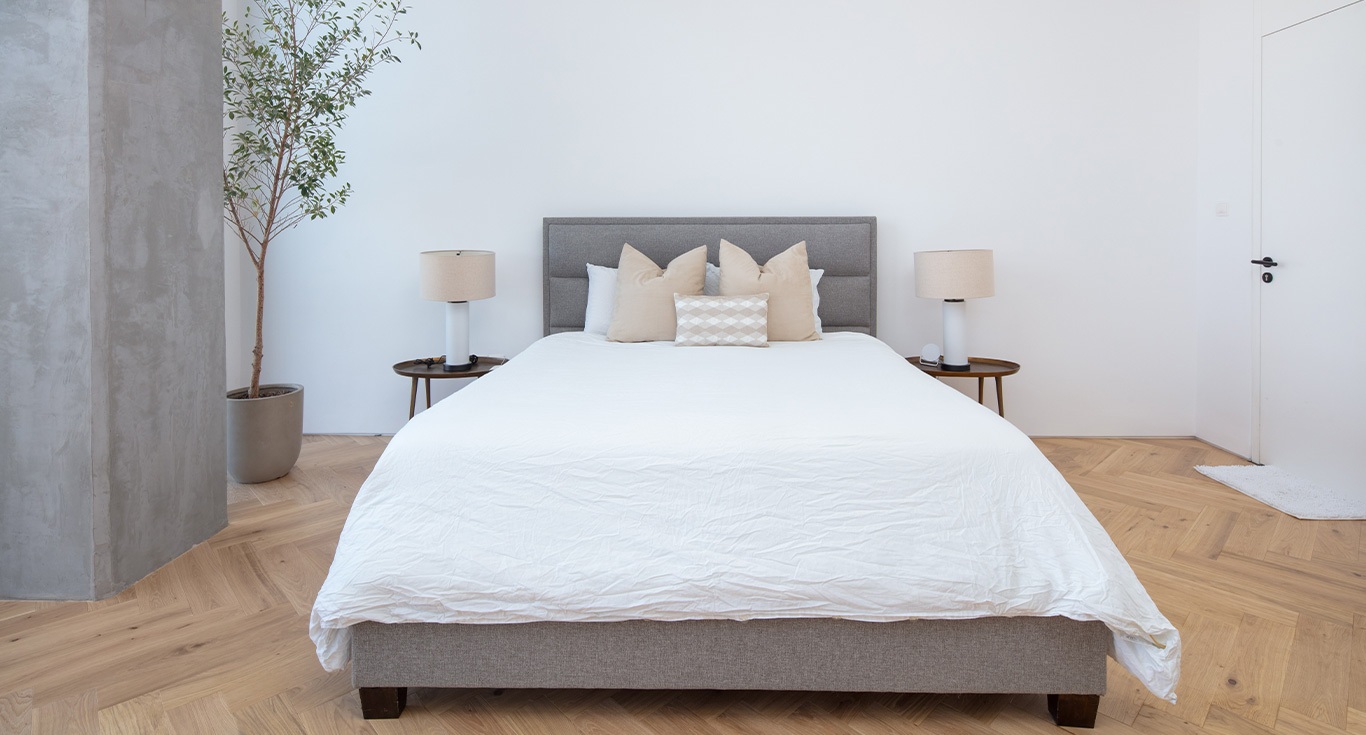
Opting for a Scandinavian design style for your home means focusing on simplicity, functionality, and warmth. Each space should feel inviting and practical while maintaining a clean aesthetic. Here’s how you can incorporate Scandinavian interior design principles into different parts of your home:
Living Room
The living room is the heart of Scandinavian design, offering a blend of style and comfort. Keep the space light and airy with thoughtful decor.
- Use a neutral palette with pops of pastel.
- Choose a contemporary sofa and coffee table with a basic shape.
- Introduce a large area rug and cosy throws.
Kitchen
A Scandinavian kitchen combines practicality with sleek aesthetics. Create an organised and welcoming space to enjoy cooking and dining.
- Opt for open shelving with neatly arranged ceramics.
- Include wooden or stone countertops for a natural touch.
- Use pendant lighting to accentuate clean lines.
Bedroom
Scandinavian bedrooms are serene and restful, designed to promote relaxation with a minimalist approach.
- Stick to a light colour palette, like greys and whites.
- Choose functional furniture, like a bed with storage.
- Add cosy elements such as linen bedding and a soft throw.
Workspace
A Scandinavian workspace is designed to boost productivity while keeping stress at bay. It’s all about organisation and simplicity.
- Keep the area uncluttered, with functional storage.
- Choose ergonomic furniture and minimalist window treatments to let natural light in.
- Add plants for a touch of greenery.
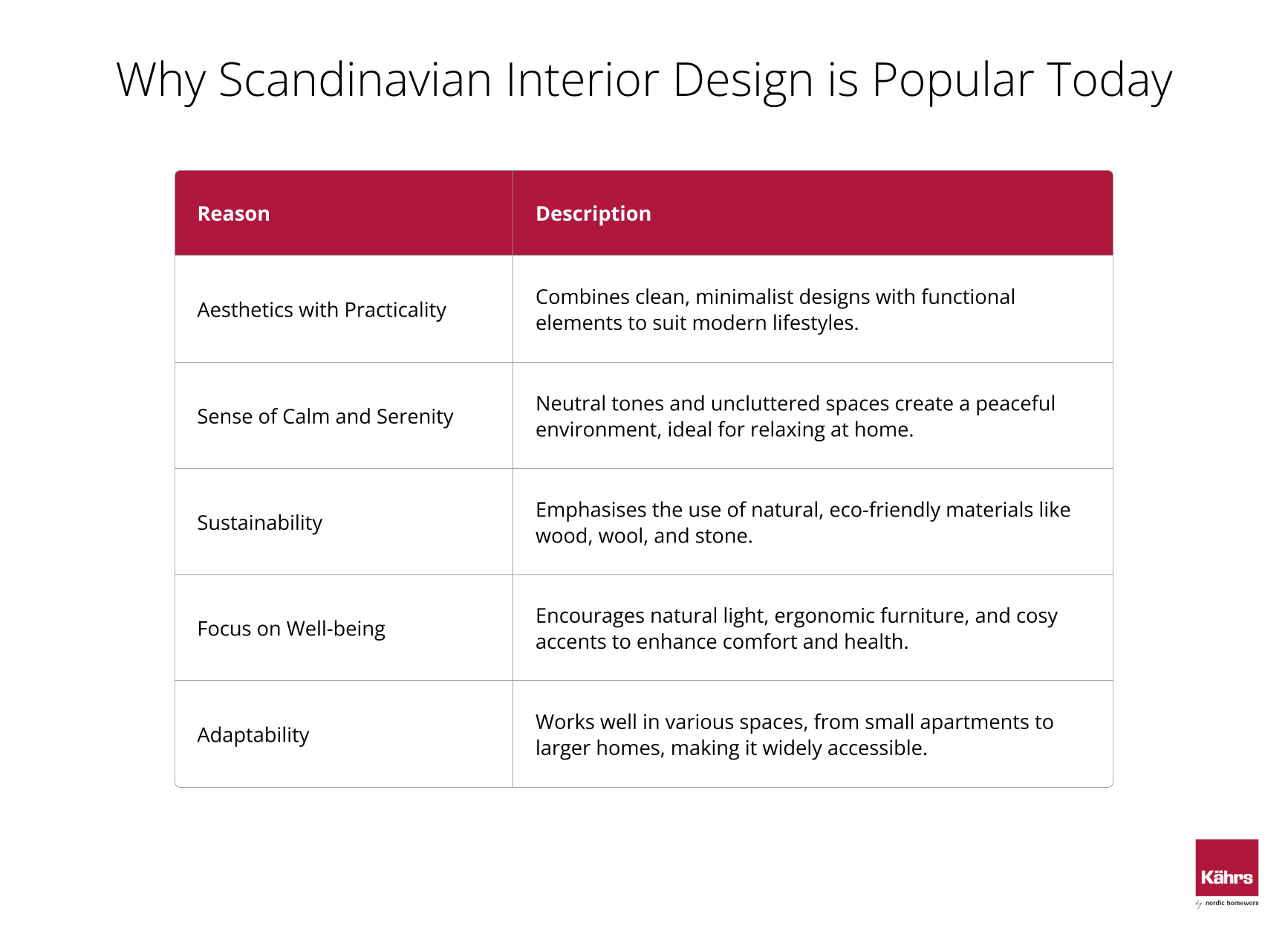
The Role of Flooring in Scandinavian Interior Design
When it comes to Scandinavian interior design, flooring is more than just a place to walk on. It’s what the whole room is built on; therefore, it’s crucial to make your space look and feel light, open, and cohesive.
Scandinavian design style is rooted in sustainability, which focuses on the use of eco-friendly materials. That said, wood flooring adds warmth and makes your space more connected to nature. Light-coloured floors allow sunlight to bounce back, making the room look even brighter and airier, which this style is known for.
In Scandinavian homes, hardwood flooring is valued for more than just its appearance. It is also about its durability. It should be able to withstand the normal wear and tear of daily life while still looking clean and simple.
Scandinavian Design Remains a Timeless Favourite
Scandinavian interior design continues to inspire homeowners and designers worldwide. Its emphasis on simplicity, functionality, and connection with nature resonates deeply with those seeking calm, well-organised spaces. In particular, residential Scandinavian interior designs stand out for their ability to transform everyday living areas into serene, practical retreats.
Flooring is an important part of any room. For it to reflect Scandinavian design principles, it should match your furniture, walls, and general colour scheme. You can refer to our guides on flooring trends for inspiration.
Frequently Asked Questions
What is considered Scandinavian style?
Scandinavian style refers to a design approach rooted in the Nordic way of life. It emphasises simplicity, functionality, and the use of natural materials. Spaces designed in this style are often minimalistic, light-filled, and cosy, with an emphasis on practicality and well-being.
How does Scandinavian design influence modern architecture?
Scandinavian design has significantly impacted modern architecture by inspiring clean, simple lines and sustainable building practices.
Why is Scandinavian style so popular?
The Scandinavian style is popular because it combines timeless aesthetics with practicality. Its uncluttered design, use of neutral tones, and cosy elements appeal to modern sensibilities.
What are the key features of Scandinavian interiors?
Key features of Scandinavian interiors include:
- Neutral colour palettes (whites, greys, and earthy tones).
- Natural materials like wood, leather, and wool.
- Functional and minimalistic furniture.
- Emphasis on natural light with large windows and reflective surfaces.
- Cosy accents, such as soft textiles and warm lighting.
How does architectural design ensure functional living spaces?
In architectural design, functionality is achieved through thoughtful layouts, multi-purpose areas, and the strategic placement of windows and walls to maximise light and airflow.
What is the typical colour palette of Scandinavian interior design?
Scandinavian interiors feature a neutral colour palette dominated by whites, greys, and muted earthy tones. Occasionally, soft pastels or pops of black are used to add contrast while maintaining a serene and cohesive atmosphere.
What are the key characteristics of Scandinavian design?
The key characteristics of Scandinavian design include clean lines, minimalism, and a strong emphasis on functionality. It uses natural materials like wood, stone, and textiles to create warm, inviting spaces. Light colours and uncluttered layouts are common, reflecting the values of simplicity and balance.
What is the difference between Scandinavian and Nordic decor?
Scandinavian and Nordic decor are often used interchangeably, but Scandinavian design refers explicitly to styles from Denmark, Sweden, and Norway. Nordic decor can include influences from other northern countries like Finland and Iceland. Both share a love for minimalism.
What is the difference between Scandinavian interior design and contemporary interior design?
Scandinavian interior design is a subset of contemporary design that emphasises natural materials, simplicity, and cosiness. Contemporary interior design, on the other hand, is broader and more trend-driven, often blending various styles and materials.
Can Scandinavian interior design work in warm climates like the Middle East?
Yes, Scandinavian interior design can be beautifully adapted to warm climates. Its emphasis on natural light, airy layouts, and breathable materials, such as linen and cotton, makes it ideal for creating cool, comfortable spaces.

Warm Regards,
Pauline Madani
Founder & Managing Director Nordic Homeworx


